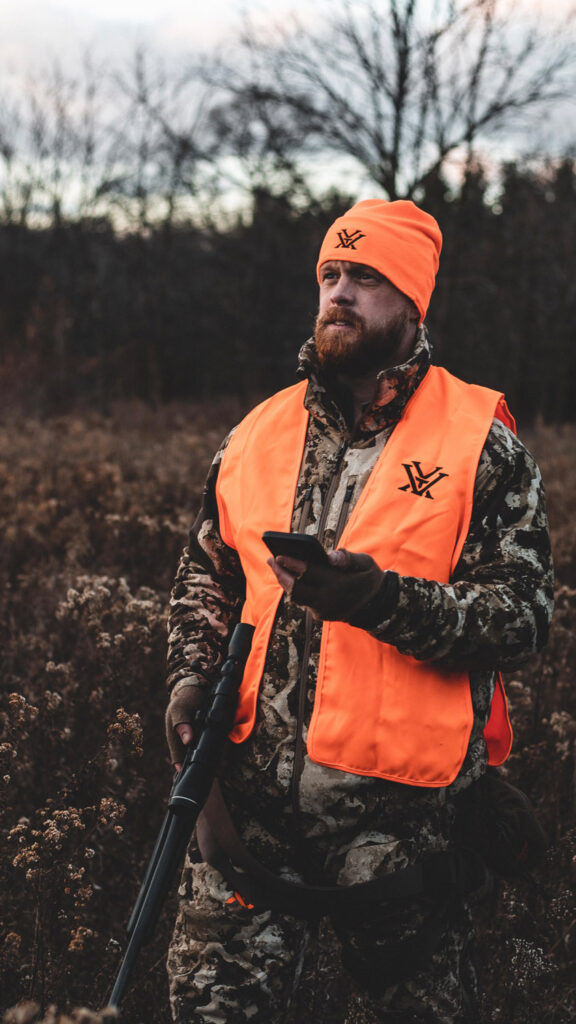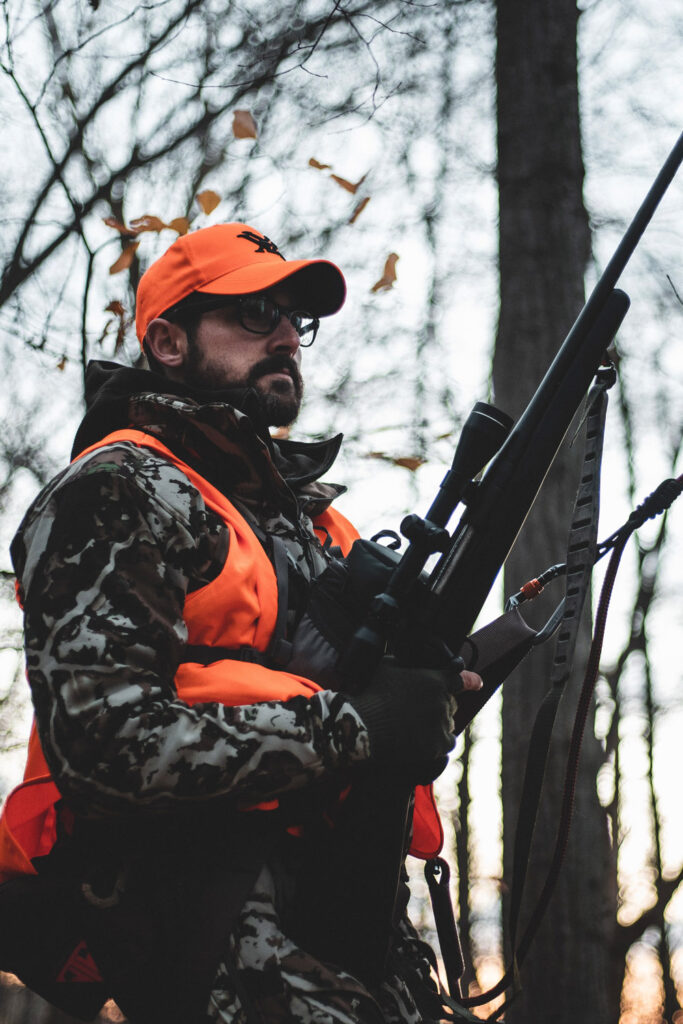The Magic of Hunter Orange

Michigan’s “orange army” will take the field on Nov. 15. With vests, hats, jackets, and sweatshirts, Deer Day’s hunters carry to their blinds through the crisp morning air the unmistakable glow of opening day’s official color: blaze orange.
Hunter’s orange is as much a part of deer season as rifles, tree stands, or Euchre. But have you ever wondered how this iconic color became the uniform of gun hunters?
Just a few generations ago, the unofficial uniform of rifle season was red buffalo plaid. Now claimed by latte-drinking millennial city dwellers with neatly coiffed beards, for decades this style was all about practicality.
Wool buffalo plaid jackets kept hunters warm and dry, even in the worst weather. The red was thought to provide hunters with a little extra visibility in the woods without being too garish. Importantly, red plaid didn’t seem to bother the deer.
As the reader might already be thinking, the problem was that red might actually work better as camouflage in the woods in the fall, especially in dim light. Deep red is one of autumn’s colors, after all, the same color as the jackets of our hunting forefathers. Accidental shootings were all too common.

Blaze orange took America just a few years before the Beatles did. In 1960, Vermont hunter Frank Woolner penned a famous article for Field & Stream magazine titled “Hunter Orange—Your Shield of Safety.” Drawing from a massive study conducted by the U.S. Army and a few partner agencies the year before, Woolner argued that blaze orange was the best color for preventing hunting accidents.
The study was one of the largest of its kind ever attempted, including 100,000 members of the Strategic Army Corp chosen by optometrists to represent the U.S. male population. The goal was to figure out what color stood out best in the field. Competing shades included non-fluorescent yellow, non-fluorescent bright red, and four fluorescent varieties: fire orange, neon red, arc yellow, and blaze orange.
Between late October and January, participants were asked to identify these colors in a variety of conditions, terrain, and distances—and were directed to shoot at the white control-color targets only. Unlike the other tested colors, blaze orange was never mistaken for the control targets, not even by soldiers who were color blind.
Blaze orange works so well for hunting apparel, because human eyes can’t miss it. For deer, however, it may as well be camouflage. Deer have dichromatic vision, meaning they can only see shades of blues, purples, and greens. While your safety vest stands out like a neon sign to your fellow hunters, deer see a muted yellow, greenish color.
In other words, you are just part of the scenery. That’s the magic of hunter orange.
In recent years, many states have embraced fluorescent pink as an acceptable alternative to blaze orange. Some studies suggest that “safety pink” is just as visible to the human eye—and similarly hard to see for deer.
Safety pink’s acceptability as a hunting color has been debated in Michigan for years. Lawmakers have introduced bills that would give hunters the choice to wear pink or orange, but the Michigan Natural Resources Commission has shot it down.
The NRC, for those unaware, is a seven-member body appointed by the governor to regulate hunting and fishing in our state. Its authority covers many issues, from the designation of game species to the establishment of open seasons. The NRC has had its share of controversies, however. Just this spring, after limiting the coyote season without scientific justification or adequate explanation, it was sued by a large conservation group.

For now, I’ll spare you my thoughts about the NRC’s impact on our state, just know that the NRC is keeping fluorescent pink out of Michigan’s woods on opening day.
Most folks don’t seem to mind. Part of it is tradition. Blaze orange is now synonymous with hunting. Adding the option of pink for hunting apparel feels a bit exotic, especially to those old-timers who grew up donning their trusty orange vests. It is hard to imagine a grizzled hunter like my late Uncle Gogs, unshaved and with a cigarette dangling from his mouth, strolling through the woods in neon pink.
Besides the color of our clothes, hunter education courses have also played a big role in making hunting safer. Becoming common in the 1940s, then mandatory in the 70s and 80s, these programs stress the importance of safe shooting zones, identifying your target, and, of course, wearing blaze orange.
My daughter just went through the program, and I was able to sit in for a refresher. The course provides great information and a wonderful way to get the next generation of outdoorsmen and women ready to do things the right way. Today, hunting-related shooting incidents are at historic lows, thanks in large part to these efforts.
As you gear up for another firearm season, take a moment to appreciate the orange on your vest, hat, jacket, or sweatshirt. Blaze orange isn’t just part of the tradition. On a day when thousands of rifles are being fired in the great Michigan wilderness, it’s a lifesaver.
James Zandstra is an experienced outdoorsman with a passion for the Mitten State. Follow his work on X @TheFairChase1.